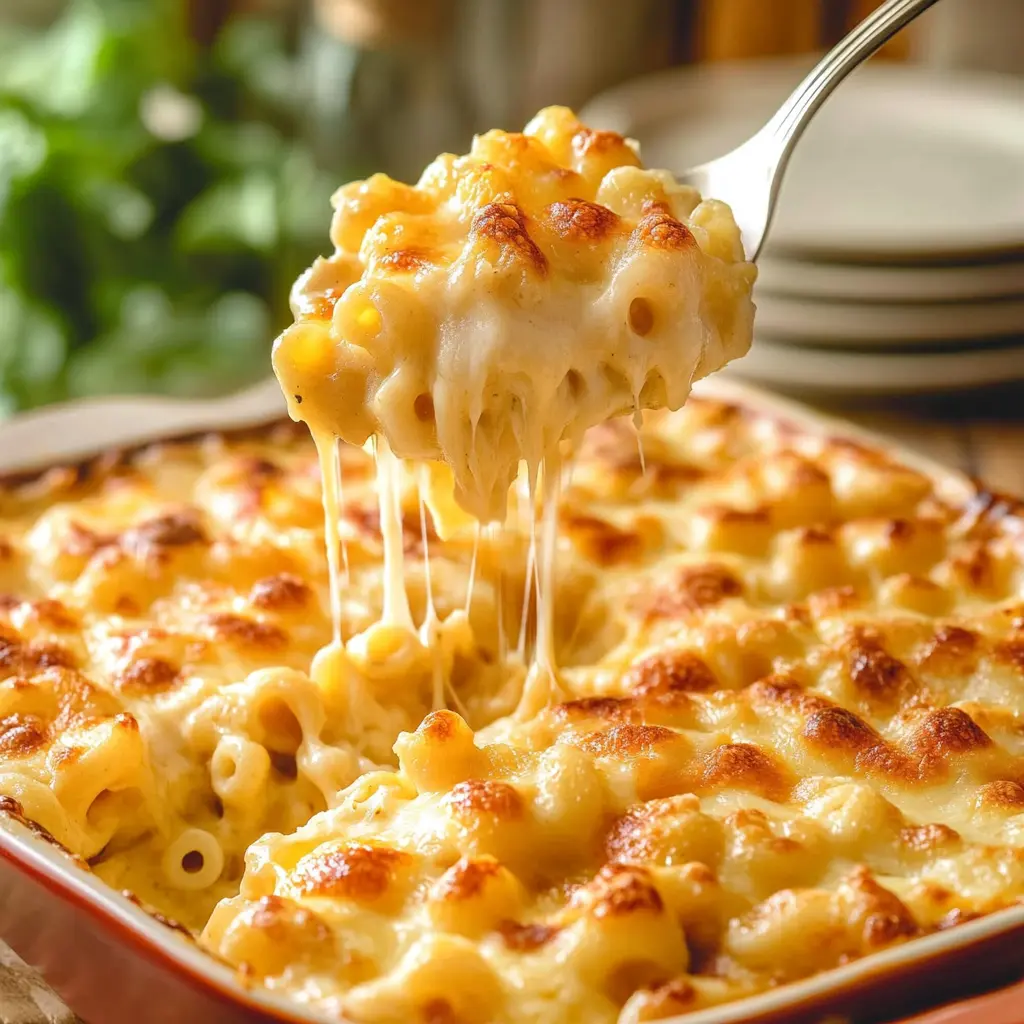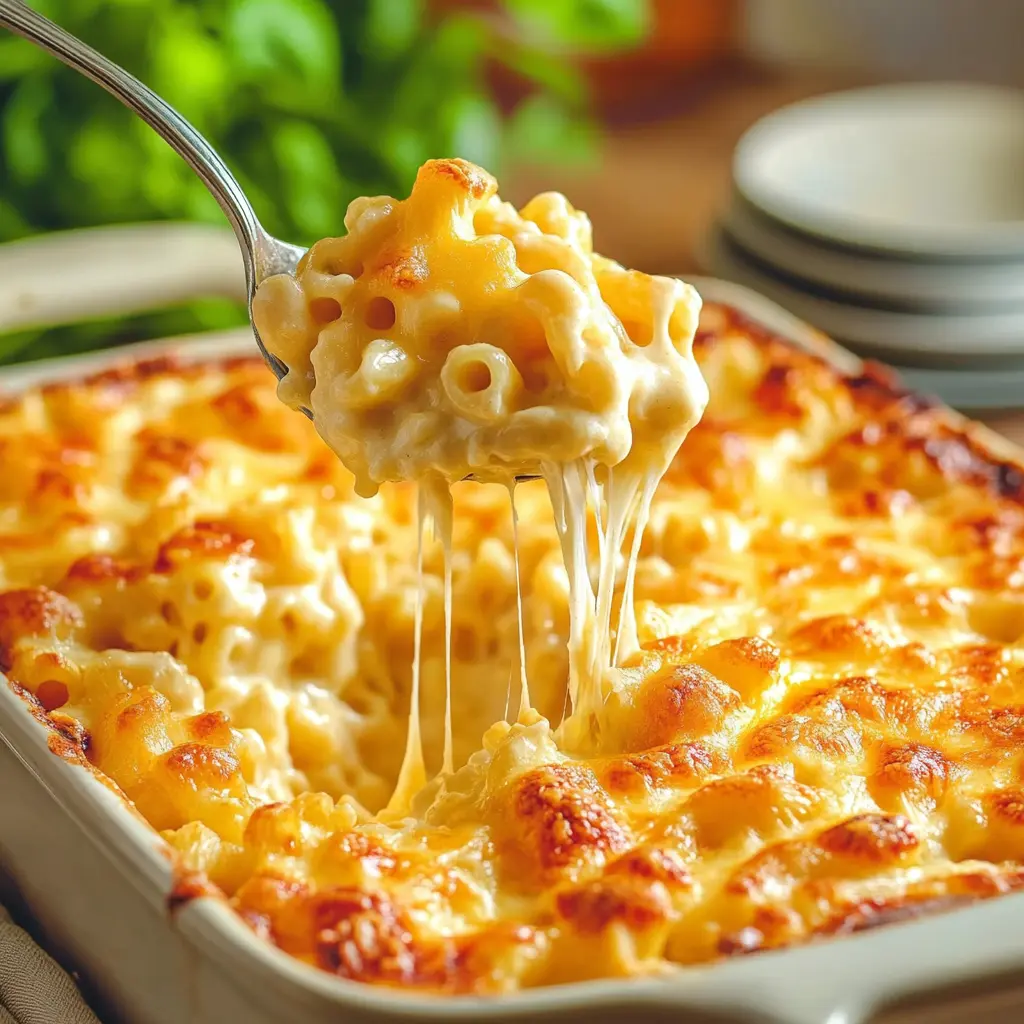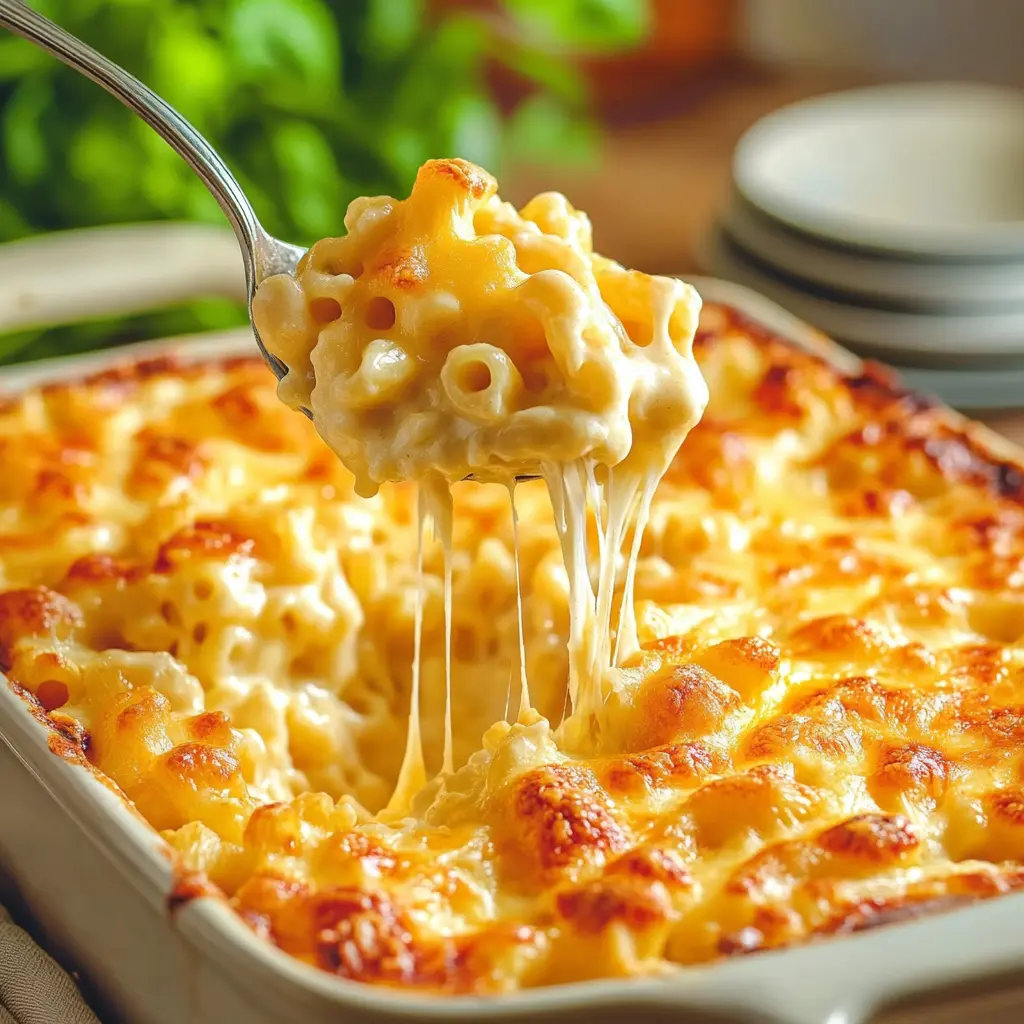Introduction to protein with mac and cheese
Mac and cheese, that quintessentially comforting dish, has woven its way deeply into the culinary fabric of many cultures, especially in North America. It’s beloved not just for its creamy, cheesy goodness but also for its ability to adapt and meld with a variety of additions. However, while mac and cheese shines bright with indulgence, it often falls short on the protein front. This isn’t just about boosting nutritional value; adding protein can transform this classic from a simple side dish to a hearty, stand-alone meal.
In today’s exploration, we dive into the best protein with mac and cheese pairings. From meaty additions that pack a flavorful punch to subtler, plant-based options that enrich without overwhelming, this guide will cover a spectrum of choices to suit any palate. We’ll provide tips on how to best prepare these proteins and discuss various types that can elevate your next mac and cheese experience from comforting to downright delectable.
Popular Proteins to Pair with Mac and Cheese
Chicken
Chicken is a no-brainer when it comes to proteins for mac and cheese. Its mild flavor and tender texture make it an ideal companion for the creamy richness of mac and cheese. Whether you’re stirring in some sautéed chicken breast, incorporating leftover rotisserie chicken, or layering in a spicy chicken sausage, chicken ensures your mac and cheese is both satisfying and balanced. This guide provides tips for pairing proteins like chicken with mac and cheese.
Ground Beef
Ground beef elevates mac and cheese into a robust and fulfilling meal. Imagine the heartiness of a classic cheeseburger intermingled with the velvety allure of macaroni. For a truly sumptuous experience, brown the beef with onions and perhaps a touch of garlic before mixing it into your pasta, or layer it between mac and cheese for a lasagna-like effect. This mac and cheese protein pairing promises a comforting meal that is sure to satisfy any hearty appetite. For more ideas, check out these top pairings and tips.
Shrimp
Shrimp offers a touch of elegance and a hint of sweetness, making it a superb choice for those who like a bit of gourmet flair in their comfort food. It’s particularly delightful in mac and cheese, where it can shine as the star or act as a luxurious complement. Lightly seasoned and sautéed until just pink, shrimp pairs beautifully with a white cheddar or Gouda mac and cheese, providing a contrast in flavors and textures that is absolutely mouthwatering. Explore how shrimp can enhance your mac and cheese.
By choosing the right protein to accompany your mac and cheese, you can elevate this beloved dish into a more nutritious and satisfying meal. Next, we will explore how vegetarian and vegan options can also bring substantial protein to the table without compromising on taste or texture.
Vegetarian and Vegan protein with mac and cheese Options
Tofu
Tofu, often celebrated for its remarkable versatility, stands out as an excellent plant-based protein with mac and cheese. This soy-based protein is a chameleon in the kitchen, adept at absorbing the flavors it’s cooked with. For an extra layer of texture and taste, try pressing and marinating your tofu before sautéing it until crisp. Cubed and tossed with your creamy mac and cheese, tofu can introduce a delightful contrast, enriching every bite without overwhelming the dish’s inherent flavors.
Tempeh and Plant-Based Sausages
For those seeking a bit more bite and spice in their mac and cheese, tempeh and plant-based sausages are ideal. Tempeh, made from fermented soybeans, offers a nutty flavor and a satisfyingly chewy texture that holds up well amidst the creaminess of the cheese sauce. Similarly, plant-based sausages can add a smoky or spicy dimension, depending on the variety you choose. Slice them up and pan-fry until golden, then mix into your mac and cheese for a burst of flavor that complements the dish’s richness.
Roasted Vegetables
Don’t overlook the power of roasted vegetables to boost both the nutrient content and the flavor profile of your mac and cheese. Broccoli, cauliflower, and even Brussels sprouts can be roasted to caramelized perfection and then mixed into the pasta. These vegetables not only add a pleasant crunch and fibrous texture but also enhance the meal’s overall healthfulness. Roasting brings out a natural sweetness in the veggies, which pairs beautifully with the savory, cheesy sauce, creating a harmonious blend in every forkful.
Incorporating these vegetarian and vegan proteins not only diversifies the texture and taste of traditional mac and cheese but also increases its nutritional value, making it a more balanced meal option. Next, we will delve into non-traditional proteins that can add an unexpected twist to your mac and cheese.
Non-Traditional protein with mac and cheese Additions
Lobster
Lobster brings a touch of luxury to any dish, and when added to mac and cheese, it transforms the meal into an exquisite dining experience. The sweet, succulent meat of lobster pairs wonderfully with a creamy, rich cheese sauce, making every bite a celebration of flavors. For an indulgent twist, fold gently cooked lobster pieces into the pasta, or top the mac and cheese with a whole lobster tail for a show-stopping presentation.
Chorizo
If you’re craving something with a bit more kick, chorizo is your go-to protein. This spicy sausage infuses the mac and cheese with its bold, smoky flavors. Brown the chorizo first to release its aromatic oils, then mix it into the mac and cheese to let the spices permeate throughout the dish. The result is a vibrant, flavor-packed meal that’s sure to please anyone looking for a hearty and spicy twist on the traditional recipe.
Pulled Pork
Pulled pork offers a smoky depth that complements the creamy texture of mac and cheese beautifully. Its savory goodness, especially when cooked with a hint of barbecue sauce, melds perfectly with the cheesy pasta, creating a comforting and satisfying dish. Mix the tender, shredded pork through your mac and cheese to ensure every forkful is enriched with its hearty, smoky flavor.
These non-traditional proteins not only enhance the taste and appeal of mac and cheese but also turn an ordinary meal into an extraordinary one. Whether you’re aiming for luxury with lobster, spiciness with chorizo, or smoky richness with pulled pork, each addition promises a delightful culinary adventure. Next, we’ll explore gluten-free and allergy-friendly options to ensure everyone can enjoy this comforting classic.
Gluten-free and Allergy-Friendly protein with mac and cheese Options
Choosing Gluten-Free Pasta Alternatives
For those managing gluten sensitivities or celiac disease, finding suitable pasta alternatives is crucial for enjoying mac and cheese without health concerns. Thankfully, the market is teeming with gluten-free pasta options made from a variety of ingredients. Common choices include rice, quinoa, corn, and even lentil-based pastas. Each type offers a unique texture and flavor profile, so you might need to experiment to find which best suits your taste and holds up well under a rich, creamy cheese sauce.
Safe protein with mac and cheese Choices for Gluten Sensitivities
Incorporating protein into your mac and cheese doesn’t just boost the nutritional value; it also enhances the meal’s satiety factor. For those with gluten sensitivities, selecting gluten-free proteins is essential to keep the meal safe and enjoyable.
Grilled Salmon
Grilled salmon is an excellent choice for a high-protein, gluten-free addition to mac and cheese. Its rich, fatty texture and distinct flavor make it a luxurious complement to the dish. When grilling salmon, aim for a medium cook—flaky and tender on the inside, slightly crisp on the outside. This preparation ensures that the salmon remains moist and flavorful, blending perfectly with the pasta and cheese.
Blackened Chicken
Blackened chicken offers a robust flavor profile with a kick of spices that are typically gluten-free, but always check labels to be sure. To prepare, coat chicken breasts in a mixture of paprika, garlic powder, cayenne, and other spices, then sear in a hot skillet to achieve that coveted crusty exterior. The spicy, smoky flavor of the chicken provides a delightful contrast to the creamy, mild flavors of mac and cheese.
Navigating Dairy Allergies and Lactose Intolerance
Dairy allergies and lactose intolerance can also pose a challenge when preparing mac and cheese. For those who need to avoid dairy:
Dairy-Free Cheese Alternatives
There are numerous non-dairy cheese alternatives available that are made from nuts, soy, or vegetable oils. These products melt differently and have varying flavors compared to traditional cheese, so it may take some experimentation to find the one that best meets your needs for both taste and texture in mac and cheese.
protein with mac and cheese Without Dairy
When adding protein to dairy-free mac and cheese, consider options like tofu, tempeh, or even a dairy-free version of plant-based sausages. These proteins are not only free from gluten but also from dairy, making them ideal for those with multiple dietary restrictions.
By choosing the right gluten-free pasta and safe protein options, you can create a mac and cheese dish that is both delicious and inclusive. This ensures that even those with dietary restrictions can indulge in this comfort food classic without compromise. Next, we will provide cooking tips to ensure your protein-enhanced mac and cheese is perfectly prepared every time.

Cooking Tips for Perfect Protein Mac and Cheese
Mastering the Cooking of Chicken and Shrimp
Cooking Chicken for Mac and Cheese
To ensure your chicken is juicy and flavorful in mac and cheese, start by seasoning it well. A simple mix of salt, pepper, and garlic powder can elevate the chicken’s natural flavors. Cook it in a skillet over medium heat until it’s golden and fully cooked inside. Let it rest before dicing or shredding to keep the moisture locked in, making every bite succulent.
Perfecting Shrimp for Pasta Dishes
Shrimp cooks quickly, which makes it easy to overcook. For the best texture, cook shrimp in a hot pan for about 1-2 minutes on each side until they turn pink and opaque. Season lightly with salt and pepper, or a dash of paprika for extra flavor. Add them to the mac and cheese just before serving to maintain their delicate texture.
Best Practices for Integrating Proteins into Mac and Cheese
Maintaining Moisture and Flavor
When adding proteins like chicken or shrimp to mac and cheese, it’s crucial to consider timing and method to avoid dryness or blandness. Here are a few strategies:
- Mix proteins in last: Add your cooked protein to the mac and cheese after the cheese sauce has been mixed with the pasta. This minimizes the protein’s exposure to prolonged heat, which can dry it out.
- Retain cooking juices: If you’re using a protein that releases juices while cooking, like chicken, try to incorporate these juices back into the dish. They’re packed with flavor and can help keep the overall dish moist and delicious.
- Season at every step: Season your protein well during cooking, and don’t forget to taste and adjust the seasoning of the cheese sauce too. This layered seasoning ensures that the mac and cheese is flavorful in every bite.
By following these tips, you can create a mac and cheese that is not only comforting and creamy but also rich in protein and bursting with flavor. Next, we will explore simple yet delightful recipes to integrate these proteins into your mac and cheese, ensuring a balanced and tasty meal every time.
Recipes for Protein-Enriched Mac and Cheese
Adding Chicken to Mac and Cheese
One of the simplest ways to incorporate chicken into mac and cheese is by using grilled or baked chicken breasts. Here’s a quick recipe:
- Season and Cook: Season chicken breasts with salt, pepper, and your favorite herbs. Grill or bake until fully cooked and juicy.
- Shred or Dice: Let the chicken rest, then shred or dice it into bite-sized pieces.
- Mix: Stir the chicken into your freshly prepared mac and cheese. Add a sprinkle of paprika for a touch of color and flavor.
This method ensures that the chicken remains moist and tender, enriching your mac and cheese with high-quality protein.
Integrating Ground Beef
Ground beef adds a hearty dimension to mac and cheese, making it more satisfying:
- Brown the Beef: Cook ground beef in a pan until it’s fully browned. Drain any excess fat and season with a mix of onion powder, garlic powder, and a pinch of cayenne.
- Combine: Fold the seasoned beef into your creamy mac and cheese for a delicious twist reminiscent of a cheeseburger.
This combination creates a robust flavor profile that complements the creamy texture of the mac and cheese.
Incorporating Tofu
Tofu is a great plant-based protein option that absorbs flavors from its surroundings:
- Prepare Tofu: Press tofu to remove excess water, then cube.
- Season and Cook: Sauté the tofu cubes in a bit of oil until golden. Season with soy sauce and garlic for extra flavor.
- Add to Pasta: Mix the crispy tofu into the mac and cheese, allowing it to soak up the cheesy sauce.
Tofu enhances the dish with a pleasant texture and boosts the protein content without overpowering the traditional flavors.
Balancing Protein in Mac and Cheese
When adding protein to mac and cheese, consider the balance of flavors and textures to ensure that no single element overwhelms the others. Here are a few tips:
- Use Mild Flavors: Choose proteins that complement rather than dominate the dish.
- Consider Cooking Methods: Opt for cooking methods that enhance the protein’s natural flavors, like grilling or sautéing.
- Season Well: Proper seasoning can bridge the flavors between your protein and the creamy cheese sauce.
These recipes and tips allow you to create a balanced, protein-rich mac and cheese that is both nutritious and delicious, making every meal more satisfying and wholesome. Next, we’ll conclude by summarizing the benefits of adding protein to mac and cheese and encouraging culinary creativity.
Conclusion: Boosting Mac and Cheese with Protein
Integrating protein into your mac and cheese is more than a culinary upgrade; it’s a nutritional enhancement that transforms a simple comfort food into a wholesome, balanced meal. By incorporating a variety of proteins, from tender chicken to rich seafood or even hearty plant-based options like tofu, you can significantly increase the dish’s protein content. This not only satisfies hunger more effectively but also helps to stabilize energy levels throughout the day.
The charm of mac and cheese lies in its adaptability. This dish acts as a blank canvas, ready to be enriched with your protein of choice. Experimenting with different proteins allows you to customize flavors and textures, catering to personal taste preferences and dietary requirements. Whether you’re looking for a luxurious twist with lobster or a robust addition with ground beef, the possibilities are endless.
So, get creative with your combinations and seasoning techniques to discover new favorites. Each unique protein pairing enhances the classic comfort of mac and cheese, ensuring that every spoonful is both comforting and nutritionally rewarding.

FAQs
What protein goes best with mac and cheese for a balanced diet?
For those looking to maintain a balanced diet, grilled chicken or turkey offers a high-protein, low-fat option that complements the creamy richness of mac and cheese without overpowering it. These lean meats are excellent for building muscle and maintaining a healthy weight, making them a perfect choice for a nutritious meal.
Can I use seafood as a protein in mac and cheese?
Yes, seafood is an excellent addition to mac and cheese. Options like shrimp, scallops, or even chunks of salmon can provide a refined flavor and boost of omega-3 fatty acids. For best results, lightly sauté seafood before adding it to your dish to preserve its natural flavors and tender texture.
What are some quick protein additions for a simple mac and cheese dinner?
Quick and easy protein additions include canned beans, pre-cooked diced ham, or smoked sausage. These can be stirred into the mac and cheese right before serving, ensuring a protein-rich meal in minutes. For a vegetarian option, consider adding chickpeas or black beans, which are not only protein-packed but also add a satisfying texture to the creamy pasta.
By incorporating these quick protein options, you can transform any serving of mac and cheese into a more nutritious and fulfilling meal, making it suitable for both quick lunches and hearty dinners.



